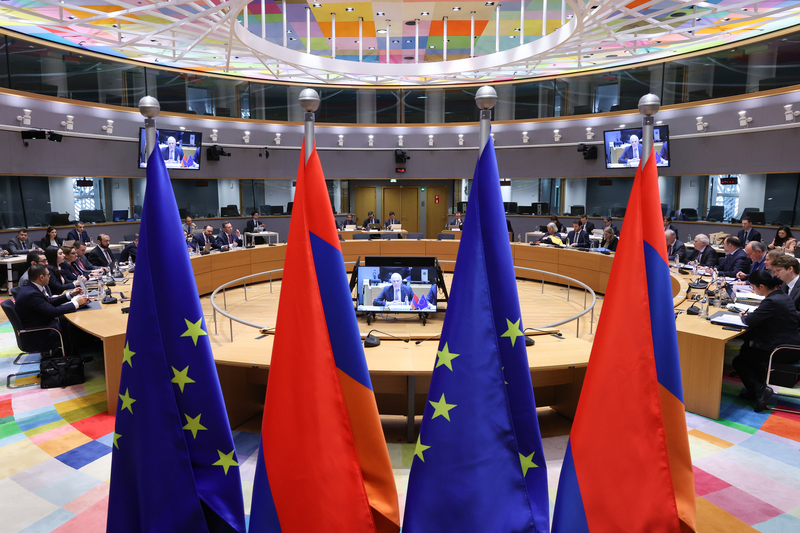European Union's €2.5 Billion Investment in Armenia: A Major Step Towards Regional Stability and Growth

European Union Commits €2.5 Billion Investment to Armenia: A Landmark for Regional Cooperation
The landscape of Eurasian cooperation experienced a significant shift following the high-level meeting in Brussels among Armenia’s head of government, the European Council’s president, and the chief of the European Commission. The announcement that the European bloc’s financial commitment toward Armenia will now reach €2.5 billion is more than a diplomatic milestone; it represents a targeted strategy to boost stability, connectivity, and economic advancement. This move underscores the broader aim to reinforce ties and foster sustainable progress, offering new momentum for domestic reform and regional collaboration.
At the heart of this commitment lies a shared vision: uplifting Armenia’s economic prospects while strengthening its political trajectory. By recognizing the reforms implemented in Yerevan—particularly those tied to legislative alignment and the ongoing modernization of administrative processes—the partnership signals deepening trust. These changes, especially regarding the legislative framework and the pursuit of easier travel protocols, strengthen Armenia’s standing as a reliable collaborator. The public confirmation of such reforms during this influential summit not only reaffirms Armenia’s orientation but also demonstrates tangible support for sovereignty and forward-thinking leadership.
A central element of the partnership involves the agreement on a new agenda—one designed to guide collective efforts over several years. This framework extends far beyond bilateral engagement. Priorities include enhanced digital connectivity, upgraded infrastructure, and a robust commitment to open governance. By incorporating provisions for security policy engagement, technological innovation, and institutional strengthening, the partnership lays the groundwork for a resilient and adaptable Armenia within the international system. Strong emphasis is placed on integrated development, with deliberate ties to regional networks, particularly those that enable Armenia’s participation in wider Black Sea initiatives.
Fueling this expansive approach is the strategic allocation of funding under a widely recognized investment platform. The new target—€2.5 billion—dwarfs previous commitments and channels capital into pivotal sectors. Complementing this, a separate resilience and growth plan dedicates €200 million in outright financial assistance and a further €70 million intended to unlock private sector momentum. This capital injection is poised to drive modernization, boost entrepreneurial activity, and stimulate essential upgrades in critical infrastructure, making Armenia more competitive in the interconnected Eurasian landscape.
The deployment of resources is carefully structured to ensure broad impact. Immediate priorities include technological upgrades for public services, improvements to energy and transport networks, and targeted support for economic diversification. Specific attention is given to institutions that are vital for democratic vitality and open information flows. An allocation of €1.5 million for media stands out as a notable example, aiming to nurture independent journalism and fortify public debate at a time when access to reliable information remains a cornerstone of stability.
Another key dimension is security collaboration. Planned consultations on defense and related matters highlight shared concerns over regional volatility and the imperative to support peacebuilding efforts. Armenia’s proactive role in seeking lasting solutions to disputes in the South Caucasus is acknowledged and supported, with the hope that such engagement will reinforce collective resilience. These steps address both immediate risks and the structural drivers that underpin sustainable peace, aligning security policy with ambitions for economic and social progress.
A particularly innovative element is Armenia’s formal engagement in cross-border projects that drive connectivity beyond its national borders. Participation in initiatives linked to the Black Sea, for example, reflects a commitment to greater integration and mutual benefit. By connecting Armenia’s economic and energy grids to those of its neighbors, the overarching goal is not only to boost trade and investment but also to support the flow of ideas and people—core ingredients for lasting prosperity in a rapidly changing geopolitical environment.
The cumulative effect of these policy actions is to forge a more resilient, diversified, and globally connected Armenian society. Clear benchmarks for reform, combined with substantial financial backing and political endorsement, create a powerful incentive structure. This enhances Armenia’s attractiveness to local and foreign investors while reassuring domestic constituencies of continued support for democratization and growth. The program’s transparency and multi-faceted nature are designed to deliver concrete improvements across everyday life, from efficient public services to expanded employment opportunities.
In summary, the commitment unveiled in Brussels marks a new era for Armenia and its international partners. The infusion of resources, structured reform agenda, and close coordination on security and democracy strengthen Armenia’s ability to navigate complex regional dynamics while solidifying its role as a vital node in Eurasian networks. As implementation proceeds, the promise of revitalized infrastructure, improved governance, and deeper integration sets a compelling precedent for the region, inspiring confidence in the transformative power of well-directed external investment. The stage is set for Armenia to capitalize on these opportunities and chart a path toward prosperity and stability that resonates both within its borders and far beyond.
